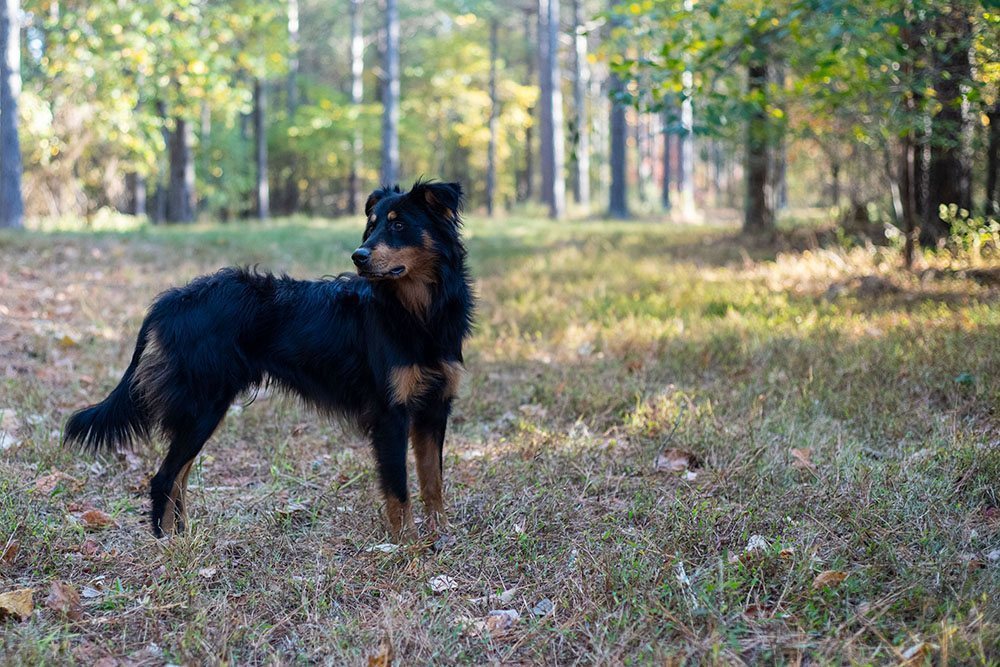The price of hay has really gone up. My local Farmer’s COOP says it’s going to stay that way as long as fertilizer is so expensive. Normally, I’d feed my goats hay through the winter, but it was always a thorn in my side because I have plenty of good grassland that isn’t fenced-in. My problem was, if I let my goats out to ruminate in the open spaces, they would also go into the woods. Lots of goodies for goats in the woods, and my LGD will protect them, so I’m fine with that. But if they don’t want to be put back away when the time comes, even Sugar, my best working dog at the time, doesn’t know how to bring them out from the tree line. She does fine on open ground but digging goats out of the woods perplexes her. Now that I have Shep, I can let the goats out twice a day without a second thought. He brings them in from anywhere, like clockwork. He doesn’t get aggressive, but he doesn’t quit. When they go into the woods, he always finds them, and he does just enough to bring them back out. No drama. Even my most stubborn Nanny caves to Shep. His sire is a fifth-generation IESR black and tan from the Sallee/Walker dogs, and his dam comes from Carousel Farm. Nothing but black and tan on either side of his pedigree. Shep is saving me real money. He works for a Milkbone and a scratch under the chin, which is a lot cheaper than hay. When we’re not working, Shep and I spend a lot of time in the woods. Lately, we’ve been taking pre-dawn hikes into the timber. Lots of scent trails for him that early. He loves it, and I really enjoy my time with him.
Training Shep
Up until 16 weeks of age, most of my puppy curriculum consists of manding, marker training and recall. After that, Shep started accompanying me for morning goat chores. At dawn, we’d take the goats from the barnyard to the pasture. We spend about thirty minutes in the pasture, keeping the herd together but mostly staying back a few dozen feet so the goats could freely ruminate. Together, the dog and I would push them slowly around the perimeter of the clearing. This is called “tending” by some. At first, the pup was on long lead. After about 30 minutes, we’d put the goats back to the barnyard. After two weeks of that, we got rid of the long lead, and after 30 minutes of “tending”, Shep would follow the goat herd from the pasture, down the chert road that winds through the woods, across the orchard’s hill, and then back to the barnyard. The herd and the dog arrive back at the barnyard’s gate about 30 seconds before me. For that half-minute, Shep would stand in the open gateway, holding the goats in the barnyard until I rewarded him with a milk bone. Standing at the gate and holding the goats was not trained. He offered the behavior on his own. The work I needed done was introduced to Shep in bite-sized parts, and then it was all put together to form a complete workflow. I hesitate to call it training, although I suppose that’s what it was. What it really felt like though, is that Shep already knew what to do and I was just showing him the timing and order in which I wanted it done. His “touch” is the best part. Strong and tenacious without aggression. The moment a goat does what he wants, he backs off and lets her do it. That was not trained – he just had that in him.

